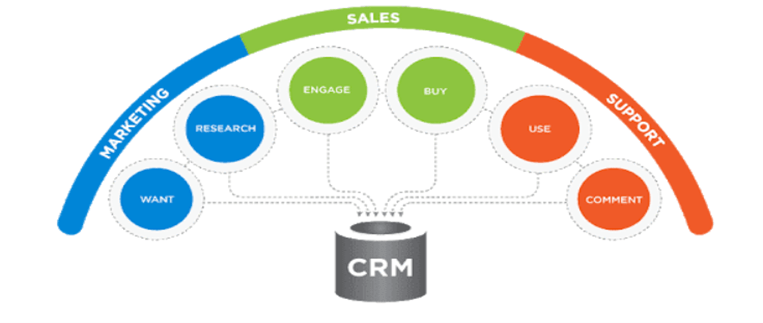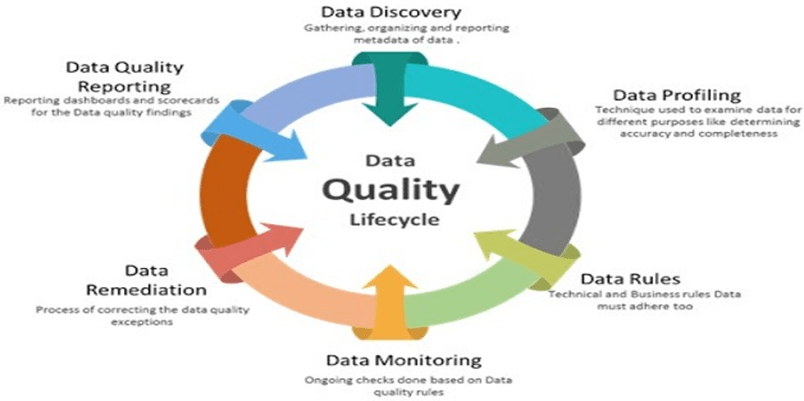Salesforce is one of the world’s most successful, flexible, and customizable platforms of technology, delivering a variety of applications that have transformed the world of marketing, sales, and customer service… Before continuing, let’s discuss the data quality challenges. Getting the most out of your Salesforce CRM system requires ensuring and maintaining data quality, which is complex in today’s data-driven business world.

Image Source = Google | Image By – Cloud Integrate
Data Quality Framework: Salesforce data quality is important for making business decisions. Poor data quality can negatively impact productivity, users can lose confidence in their systems, and is one of the main reasons why 40% of all business initiatives fail to achieve their intended profits. This is a five-step framework:

Image Source = Google | Image By – Cloud Integrate
In the real world, Salesforce users can use a few simple tips to track the accuracy of their data over time. There are five top Salesforce data quality hacks.
1) Data Standardization
The first hack also seems to be the most obvious. Still, its importance cannot be exaggerated. Simply put, data quality is impossible without standardized entry methods.
A typical example of this is the position of an HR director, who is typically a potential customer in a Salesforce database. Consider the possibilities.
- Responsible for HR Director
- Responsible for Director HR
- Responsible for Human Resource Director
- Responsible for Human Resources Director
- Responsible for Director of Human Resources
There may be several more. When trying to segment the data by job title, these five can be considered as five different jobs. Simple naming conventions such as job title, case sensitivity, required and optional fields can greatly help avoid confusion and error reporting.
Of course, the data entry standard must be ensured by everyone with permissions. This may require training or technical support to minimize errors and maximize data quality.
Related: If the data quality is poor, find out why. This isn’t necessarily the most motivational task, so you can easily lower your priorities. Personal awareness and data quality awareness can greatly help restore this motivation. Build a culture of data quality between responsibility and awareness
2) Integrating data quality into customer communication
Data quality issues do not just occur during input. These can occur at any point in the customer journey. Even the best dates can get worse over time, as seen in the 71% stats above, if not properly managed.
A good way to avoid both early quality issues and outdated data is to focus on the quality of customer conversations. Depending on the sign-up process, after filling out the lead form, you may receive a confirmation email to confirm that your contact information is correct. Of course, this is beyond this setting.
Everyone who communicates with a customer needs to be trained to verify current information. It’s as easy as verifying that your current job title is still valid and that your surname is spelled correctly. Anyway, the point here is that every touchpoint should be an opportunity to improve data quality.
This is not always easy. In fact, it can seem counter-intuitive. Still, it helps build a database that is not only correct from the beginning, but also maintains its state over time. Data fluctuations cannot be completely avoided. However, you can deal with this churn and do your best to minimize the inaccuracies that inevitably occur over time.
3) Do you know the old saying that puts a special responsibility on data quality?
If you don’t know how to fix the problem, ask someone else to fix it.
Indeed, it has amazing validity.
Data quality managers take the process more seriously and build reliability and expertise over time. This only improves the accuracy of your Salesforce contacts.
Ideally, if you have a Salesforce Quality Assurance Manager responsible for this process. Of course, most companies do not have such luxury or business. Fortunately, you don’t have to. It may be sufficient to include data quality responsibilities in the technology manager’s job description. Are you still worried about the amount of work?
It can also be shared by multiple members in the admin center. This means supporting the deduplication process in IT and the aforementioned customer data communications in sales management. Therefore, you can do everything right without burdening the professionals with your existing full-time job.
4) Establishing a deduplication process
In addition to human data entry errors and outdated information, duplication tends to be a significant problem for organizations of all sizes and industries. It’s easy to enter the same prospect into Salesforce just because two salespeople met from different sources. The same issue usually occurs when the same prospect fills the same lead generation form twice from different devices.
Fortunately, Salesforce makes it easy to find these duplicates. You need to know how to set it up correctly. Software vendors propose four processes for database deduplication.
- Manage duplicates individually. Salesforce makes it easy to set up dashboards to easily view and merge potential duplicates or remove individual duplicates.
- Manage duplicates globally. Advanced users can set up an automatic deduplication job that runs every time a new record enters the database. You can set up and monitor reports and take automated actions (such as deletes) as needed.
- Duplicate detection and processing. Not only can you use these processes to detect duplicates, but you can also find suitable matches for merging. You can define a range of matches before they are considered duplicates.
- Custom duplicate management
Leave A Comment